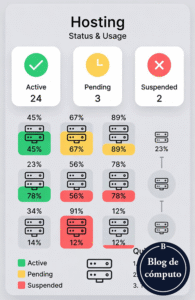Cambiar el color de los directorios Linux terminal
editar ~/.bashrc
al final del archivo agregar:
LS_COLORS=$LS_COLORS:'di=0;35:' ; export LS_COLORS otro ejemplo es: LS_COLORS=$LS_COLORS:'di=0;32:fi=0;37:ex=1;37:' ; export LS_COLORS
Some nice color choices (in this case 0;35 it is purple) are:
Blue = 34
Green = 32
Light Green = 1;32
Cyan = 36
Red = 31
Purple = 35
Brown = 33
Yellow = 1;33
white = 1;37
Light Grey = 0;37
Black = 30
Dark Grey= 1;30
The first number is the style (1=bold), followed by a semicolon, and then the actual number of the color, possible styles are:
0 = default colour
1 = bold
4 = underlined
5 = flashing text
7 = reverse field
40 = black background
41 = red background
42 = green background
43 = orange background
44 = blue background
45 = purple background
46 = cyan background
47 = grey background
100 = dark grey background
101 = light red background
102 = light green background
103 = yellow background
104 = light blue background
105 = light purple background
106 = turquoise background
All possible colors:
31 = red
32 = green
33 = orange
34 = blue
35 = purple
36 = cyan
37 = grey
90 = dark grey
91 = light red
92 = light green
93 = yellow
94 = light blue
95 = light purple
96 = turquoise
These can even be combined, so that a parameter like:
di=1;4;31;42
in your LS_COLORS variable would make directories appear in bold underlined red text with a green background!
You can also change other kinds of files when using the ls command by defining each kind with:
di = directory
fi = file
ln = symbolic link
pi = fifo file
so = socket file
bd = block (buffered) special file
cd = character (unbuffered) special file
or = symbolic link pointing to a non-existent file (orphan)
mi = non-existent file pointed to by a symbolic link (visible when you type ls -l)
ex = file which is executable (ie. has 'x' set in permissions).
*.rpm = files with the ending .rpm







